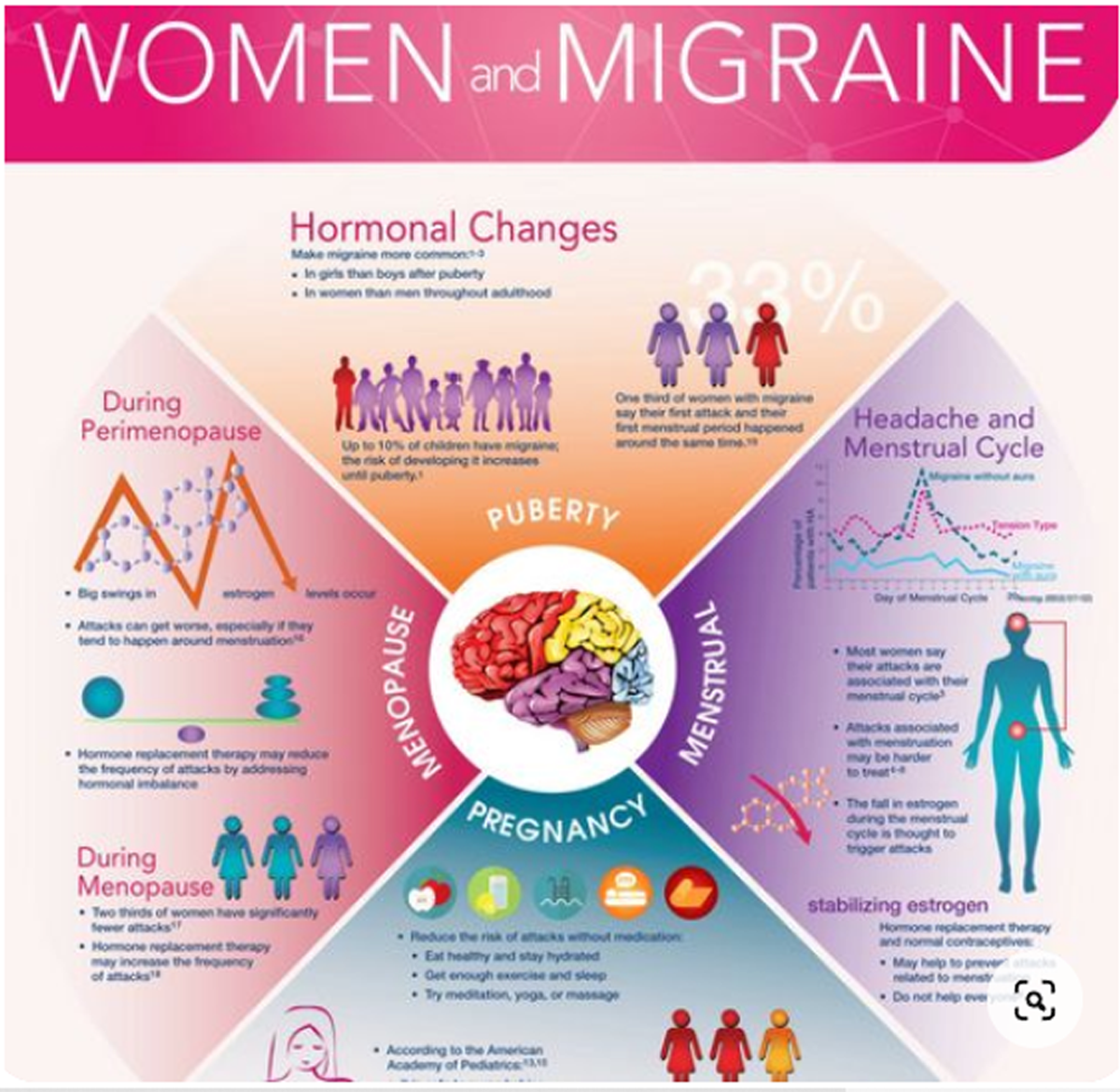Migraines Appear To Be On The Rise
SOURCE: NHI OnDemand
Migraine may be classified as migraine without aura, formerly called common migraine, or migraine with aura, formerly known as classic migraine. The differences are based upon the presence or absence of neurologic symptoms prior to the onset of headache. The aura may consist of flashing lights, or zigzag lines, or may manifest as blind spots in the vision.
Some people even experience speech difficulty, tingling in the face or hands, confusion, or weakness of an arm or leg. The majority of people suffering from classic migraine have an aura that develops 10-30 minutes prior to development of the actual headache. According to recent studies, the aura is believed to be the response to a trigger that creates a neuronal depression. This may result in as much as a 25-35 percent reduction in cerebral blood flow, and is certainly enough to cause the symptoms associated with the aura.
A recently published study [1] revealed that the prevalence of migraine headaches has increased over the past ten years among adults. The study took place over an eleven year interval and found that at the start of the study 12.1 percent of the group met the criteria for having migraine headaches. After 11 years, 13.2 percent of the participants met the medical criteria for having migraine headaches.
Researchers note that, while this one percent increase does not sound very dramatic, over the whole of the population it represents a large increase in people suffering from migraines. It is also concerning that this increase happened in a relatively short period of time.
The study authors speculate that although this study was unable to determine the exact cause for the increase in migraine headaches, it does seem likely that an environmental trigger may be to blame. One possibility is an increase in light stimuli from flickering screens since people who are susceptible to migraines are also more sensitive to light stimulation. [1]
1. Time trends in the prevalence of headache disorders. The Nord-Trondelag Health Studies (HUNT 2 and HUNT 3)
Cephalalgia. 2011 (Apr); 31 (5): 585-596






I have noticed this trend to in my office, but I also think that other condition like TMJ are left out of many clinicians diagnosis. Seem that a lot of migraines come from teeth grinding not just, tension, or cervicalgenic
I agree, migraines and TMJ can have a close correlation. What I also find interesting is patients recall either having a major fall not only landing on their heads as well as their behinds…interesting.
Absolutely migraines are on the increase. I sold the first triptan in 1992 when this disease was rare. Now 1 in 3 people seem to have then. Food additives such as MSG and artificial sweetners are in everything. Also overlooked are high EMFs due to wireless technology. We are bombarded with electromagnetic fields. Even fluorescent lights which are a common trigger have a high EMF.